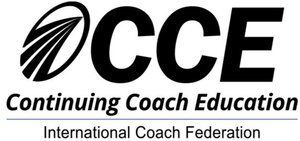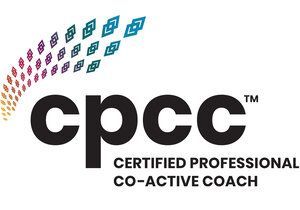Shaping Selfhood: How Tech and Social Media Influence Teens’ Identity Formation

Adolescence is a time of profound self-discovery: teens experiment with interests, values, friendships, and personal style as they build their emerging identities. Yet in today’s hyperconnected world, much of that identity work happens on screens.
Rather than exploring who they are through face-to-face interaction, teens now look to social-media feeds, influencers, and online communities to test different selves. Every “like”, filter, and “follow” becomes a data point that algorithms use to mirror back a curated version of the self. This digital reflection can empower creativity and connection, but it can also distort self-worth, foster comparison, and lock teens into narrow, algorithm-driven identities. In fact, a 2024 Mozilla study1 found TikTok locks in on a user’s niche within 40 minutes, after which 80% of videos reinforce that same theme, even if the user stops engaging. Over time, teens learn to judge their worth by these algorithmic reflections, embedding a fragile, externally dictated self-image.
Why Teenage Years Are Crucial for Identity Formation
During adolescence, the brain undergoes a dramatic reorganization. The limbic system, which governs emotions and reward processing, matures rapidly around puberty, making teens especially sensitive to social feedback and novelty. In contrast, the prefrontal cortex, responsible for impulse control, planning, and reflection, continues developing into the mid-twenties. This imbalance creates a window where emotional drives often outweigh rational oversight.
Simultaneously, the brain undergoes synaptic pruning and myelination, strengthening neural pathways through repeated behaviors. Online, every click, like, or share provides immediate emotional payoff and simultaneously reinforces circuits that link identity to digital validation loops. This makes adolescence a uniquely malleable, and vulnerable, time for forming a lifelong sense of self.
A World Where Identity Is Always “On” and the Pressure of Perfection
A January 2025 CNA–Institute of Policy Studies survey2 found Singaporean teens spend an average of 8.5 hours per day on screens, more time than they devote to school or sleep. Globally, 46% of U.S. adolescents report being online “almost constantly,” and 60% feel pressured to present an idealized self for likes and followers3. In this nonstop digital stage, every scroll, post, and reaction wires directly into the neurons shaping a teen’s self-concept.
Physical appearance is central to many teens’ identities, and social feeds are flooded with airbrushed ideals. Internal Meta research4 leaked in 2021 revealed 32% of teen girls said Instagram made them feel worse about their bodies. Add to that nighttime scrolling, KK Women’s & Children’s Hospital (2024)5 found each extra hour of screen use after 10 p.m. raises next-day mood-swing odds by 21%. A sleep-deprived brain struggles with memory consolidation and self-reflection, processes vital for a coherent self-image, rendering teens more vulnerable to comparison and self-critique.
Algorithms can also amplify harmful behaviors as identity expressions. In the Center for Countering Digital Hate’s Deadly by Design (2022) report6, new teen TikTok accounts encountered self-harm content within 2.6 minutes, and after 30 minutes, one in three videos promoted self-injury or suicide. Likewise, a December 2024 CCDH study7 of YouTube recommendations found one-third of suggested videos contained harmful eating-disorder content, and 81% were not age-restricted. These loops trap vulnerable teens in a damage-defined identity, where pain and deprivation become badges of belonging.
Community and Exploration
It’s not all negative. Digital spaces can offer critical support for identity exploration, particularly for teens who feel marginalized offline. Online communities around neurodiversity, LGBTQIA+ experiences, or niche interests allow adolescents to test labels, find peers, and receive affirmation they might lack in real life. For example, transition narratives on TikTok help gender-questioning youth learn terminology, access resources, and spot role models. When stories of gender euphoria, the joy and comfort of affirmed identity, are shared online, some teens gain the language and confidence to live authentically. The key is ensuring these affirming narratives support rather than prescribe any one pathway.
Autonomy Under Threat
A stable identity requires privacy and agency over one’s own story. Yet Europol’s EU-SOCTA 2025 report8 highlights a 1,400% surge in AI-generated nude images of minors as deepfake tools proliferate. In response, schools in Europe and North America now run “deepfake drills” to teach students how to spot synthetic abuse and report incidents. Simultaneously, every tap and like is harvested as data capital: TikTok was fined €345 million in 20239 for mishandling under-16 data , and by age 13, the average U.S. teen accumulates 72 million data points that shape ads, credit offers, and even college recruitment. These incursions can leave teens feeling exposed, monitored, and reduced to a data profile, undermining self-determination.
Building Resilient Identities
Parents can’t, and shouldn’t, unplug technology. Instead, we can transform digital pressures into opportunities for intentional identity work using the these tips:
1. Presence: Weekly 5-minute Tech Tours where teens guide parents through their favorite apps, validating interests and spotting harmful patterns together.
2. Educate: explain algospeak and data harvesting, teaching teens they’re authors of their digital profiles, not products of them.
3. Agreements: Co-create a Family Tech Charter with mutually agreed limits (e.g., bedtime Downtime, screen-free zones) to bolster self-regulation.
4. Role-model: Demonstrate healthy detachment, charge devices outside bedrooms and share your own Screen Time stats openly.
5. Support and Boundaries: Bookmark crisis lines (SOS: +65 7672 4357; IMH helpline: 6389 2222) and enable in-app filters to safeguard mental health.
6. Alternatives: Encourage one daily offline “dopamine” activities (like sports, music, volunteering) to anchor identity beyond screens.
The Takeaway: Authentic Selfhood in a Digital Age
Technology can accelerate identity exploration and foster creative communities, but without guidance, it can also narrow, distort, and commodify self-concept. By weaving together clinical insight, data-driven understanding, and collaborative strategies, parents can guide teens toward authentic, resilient identities, both online and off.
References
1 Mozilla Foundation. “TikTok: Unpacking Algorithmic Personalization.” Mozilla Research, April 2024.
https://foundation.mozilla.org/en/research/tiktok-algorithmic-personalization-study/
2 CNA & Institute of Policy Studies. “Singapore teenagers spend nearly 8.5 hours per day on screens.” Channel News Asia, January 2025.
https://www.channelnewsasia.com/singapore/screen-time-devices-survey-teens-spend-daily-stress-490828
3 Pew Research Center. “Teens, Social Media & Technology 2023.” Pew Research Center, October 2023.
https://www.pewresearch.org/internet/2023/10/25/teens-social-media-technology-2023/
4 The Wall Street Journal. “Facebook Knows Instagram Is Toxic for Teen Girls, Company Documents Show.” September 2021.
https://www.wsj.com/articles/facebook-knows-instagram-is-toxic-for-teen-girls-company-documents-show-11631620739
5 KK Women’s & Children’s Hospital. “Screen Use and Sleep Patterns in Adolescents.” Journal of Pediatric Sleep, March 2024.
https://www.kkh.com.sg/health-information/child-screen-time-sleep-study
6 Center for Countering Digital Hate (CCDH). Deadly by Design. December 2022.
https://counterhate.com/wp-content/uploads/2022/12/CCDH-Deadly-by-Design_120922.pdf
7 Center for Countering Digital Hate (CCDH). YouTube’s Anorexia Algorithm: Key Findings. November 2024.
https://counterhate.com/wp-content/uploads/2024/12/CCDH.YoutubeED.Nov24.Report_FINAL.pdf
8 Europol. European Serious and Organised Crime Threat Assessment (EU-SOCTA) 2025. March 2025.
https://www.europol.europa.eu/activities-services/main-reports/eu-socta-2025
9 Irish Data Protection Commission. “TikTok Fined €345 Million for Breaching GDPR.” DPC News, September 2023. https://www.dataprotection.ie/en/news-media/tiktok-gdpr-345m-fine










